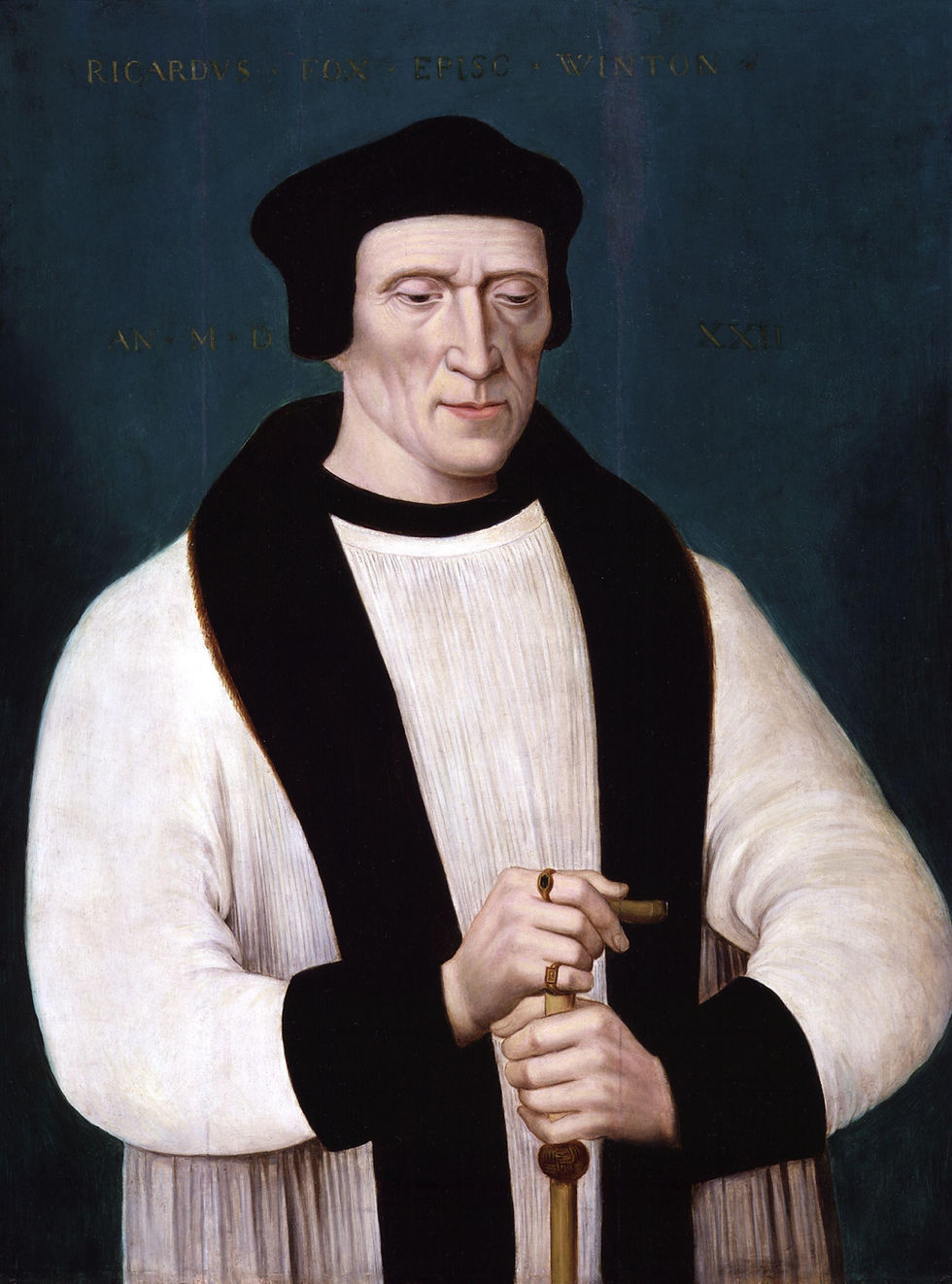Farnham's Royal Nursery: The Early Life of Prince Arthur Tudor
- gilldavid560
- Sep 18
- 4 min read

A New Camelot?
On 20 September 1486, just eight months after her marriage to Henry VII, Queen Elizabeth of York gave birth to her first child. The baby, a boy named Arthur, was hailed as a great omen for the fledgling Tudor dynasty. His birth symbolized not only the survival of Henry’s new crown but also the long-awaited union of the warring houses of Lancaster and York.
Henry chose Winchester for the birth, believing that his heir, deliberately named after the legendary King Arthur, would usher in a new “Camelot.” The christening ceremony at Winchester Cathedral was lavish, carefully orchestrated by Queen Elizabeth and her formidable mother-in-law, Margaret Beaufort
The Royal Nursery
Within a month of his birth, Arthur was moved to the specially prepared royal nursery at Farnham’s Bishop’s Palace. Elizabeth Tyrell, Lady Darcy, a seasoned governess to the children of Edward IV, was appointed to oversee the household. Caroline Gibbons served as wet nurse, assisted by two “royal rockers” to keep the infant prince’s cradle in motion. Overall supervision lay with Peter Courtney, Bishop of Exeter, soon to be elevated to Bishop of Winchester, who had been a loyal supporter of Henry Tudor and officiated at his coronation.
Around a dozen carefully selected staff cared for Arthur. Farnham was chosen for its safety: far enough from London’s regular outbreaks of plague and potential unrest, but close to his grandmother, Margaret Beaufort at Woking Palace. Henry VII, wary of the fate of the Princes in the Tower, entrusted his son’s care only to those whose loyalty had been tested.
The king saw Arthur only four times during his seven years at Farnham, but the carefully selected household proved so dependable that several of its members later followed him to Ludlow in 1493.
No expense spared
In 1487 Henry ordered that 1,000 marks (£666 13s 6d) — equivalent to around half a million pounds today — be allocated to the royal nursery, about 5% of the king’s annual household budget. The money paid for staffing and lavish furnishings, including:
a feather bed and down bolster
scarlet sheets lined with ermine
a lawn coverlet embroidered with the Queen’s arms
tapestries, with iron fittings to keep out draughts
As Arthur grew older, fabric was delivered to Farnham, where his nurses fashioned fine gowns and tunics of white velvet, damask, satin, and ermine, all carefully recorded by Peter Curteys, Keeper of the King’s Wardrobe. For a king who is often labelled as being parsimonious by nature, Henry VII spent lavishly on his son and heir.

Educating a Future King
By 1490 Arthur’s upbringing shifted towards formal education. His tutor and chaplain was the erudite and scholarly John Rede, born in nearby West Worldham, and former headmaster of Winchester College.
Daily life also included training in noble pursuits. Under the careful supervision of Richard Howell and John Almor, who oversaw his household and security, Arthur learned horsemanship, archery, hunting, and the martial skills expected of a future king — no doubt practised within the pale of Farnham Park.
Arthur’s royal status was underlined early. At just three years old he was made a Knight of the Garter and invested as Prince of Wales. Marriage negotiations had already begun before then: in 1489 Henry secured a betrothal between Arthur and Catherine of Aragon, youngest daughter of Ferdinand and Isabella of Spain. The match promised an enormous dowry of 200,000 crowns and, more importantly, placed the Tudors firmly among Europe’s leading monarchies.
Arthur's Siblings
Arthur grew up apart from his siblings. His younger brother Henry — the future Henry VIII — spent his childhood at Eltham Palace under their mother’s care, intended originally for a church career. His sister Margaret married James IV of Scotland, while Mary wed first Louis XII of France and later Charles Brandon, Duke of Suffolk. Three further siblings — Elizabeth, Edmund, and Katherine all died in infancy.

An Untimely End
In 1493 Arthur left Farnham for Ludlow Castle, seat of the Prince of Wales in the Welsh Marches. There he was tutored by Bernard André, poet laureate and humanist, another trusted supporter of Henry Tudor.
In 1501, Arthur met his bride Catherine of Aragon for the first time at Dogmersfield House, not far from Farnham, and the pair were married at St Paul’s Cathedral on 14 November 1501. But within months both fell ill at Ludlow, suffering from some sort of sweating sickness. Catherine survived; Arthur did not. He died on 2 April 1502, aged just fifteen; his body was interred in Worcester Cathedral.
Arthur’s death not only ended hopes of a “new Camelot” but also set in motion a chain of events that, decades later, would bring about the upheavals of the English Reformation.
Further reading
Gareth B. Streeter - Arthur, Prince of Wales, and Henry VII I's Lost Brother (Pen & Sword History 2023)
Alison Weir - Elizabeth of York, The Last White Rose (Headline Review 2022)
Sean Cunningham - ‘Prince Arthur: The Tudor King who never was’ (Stroud, 2016).




Comments